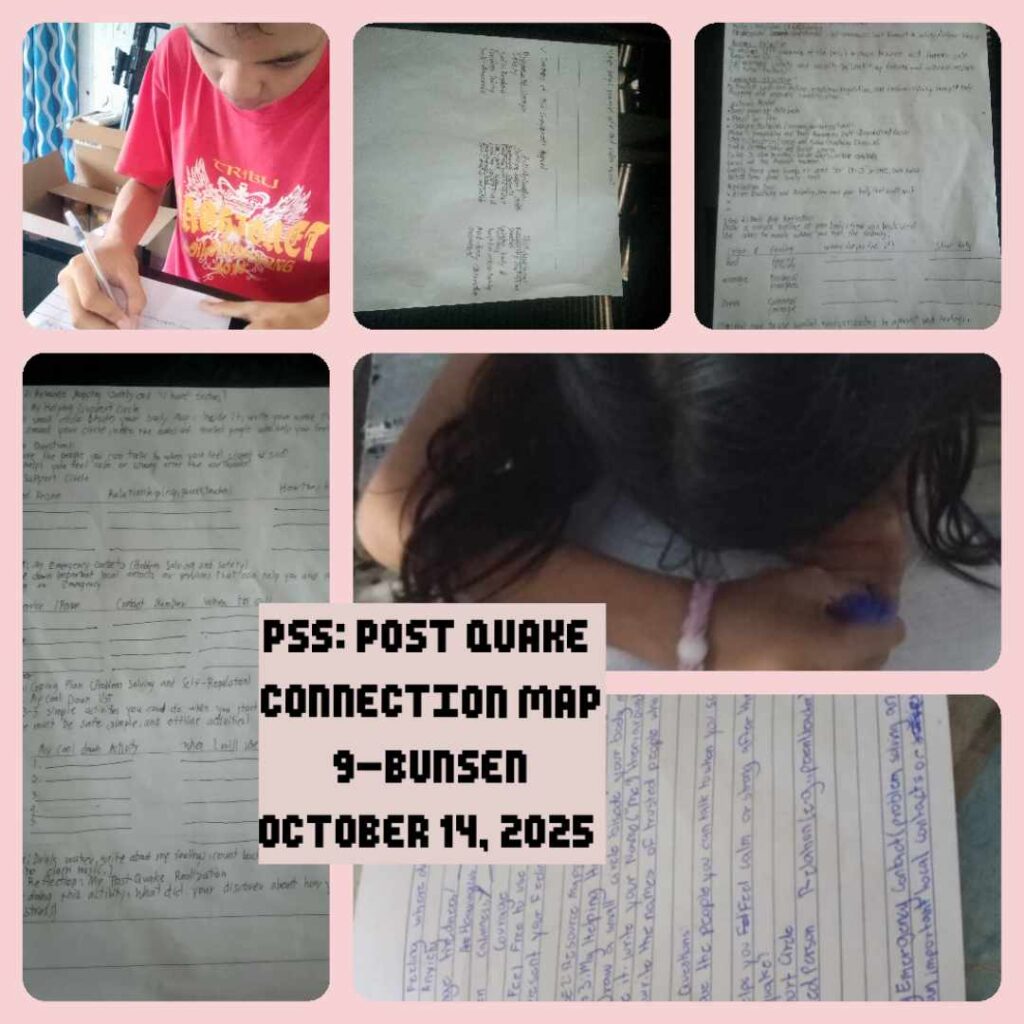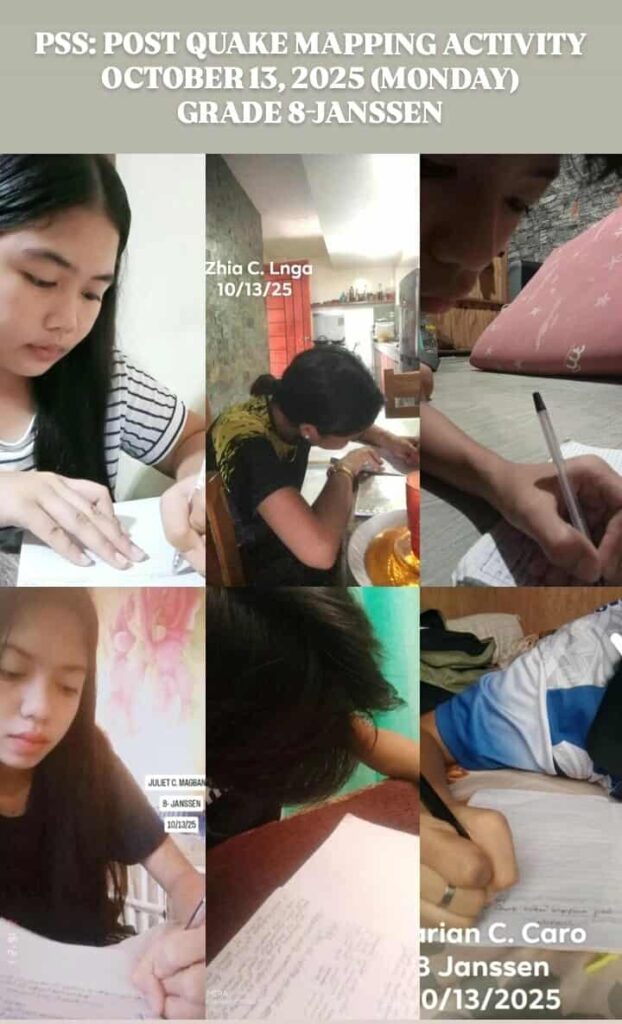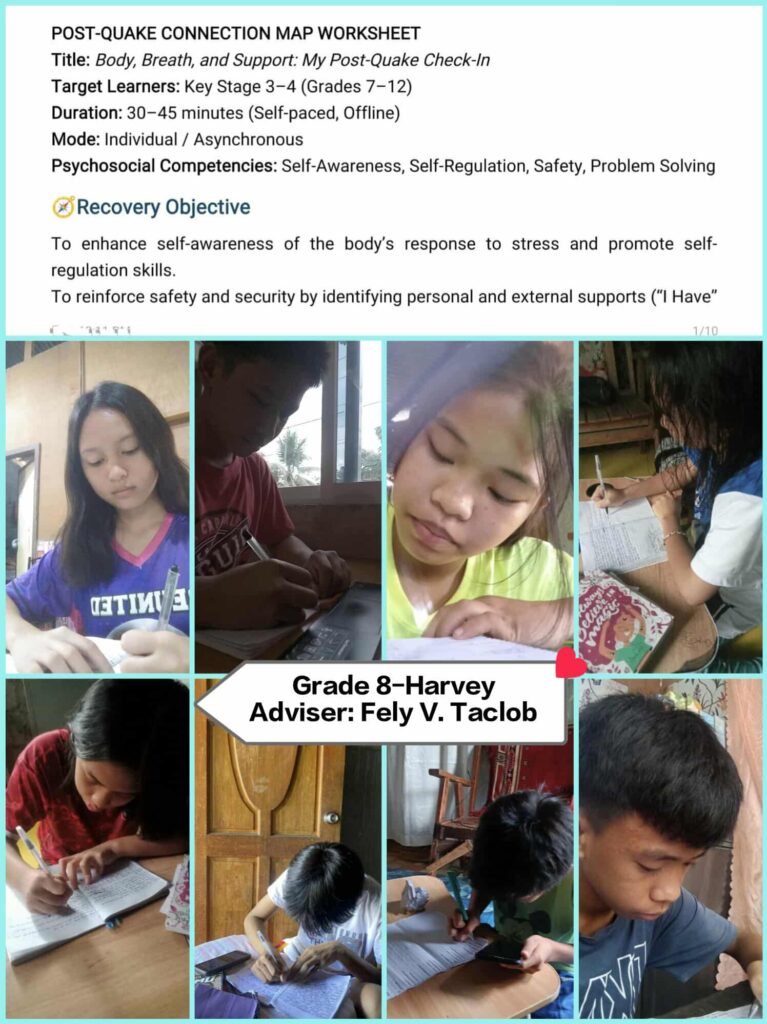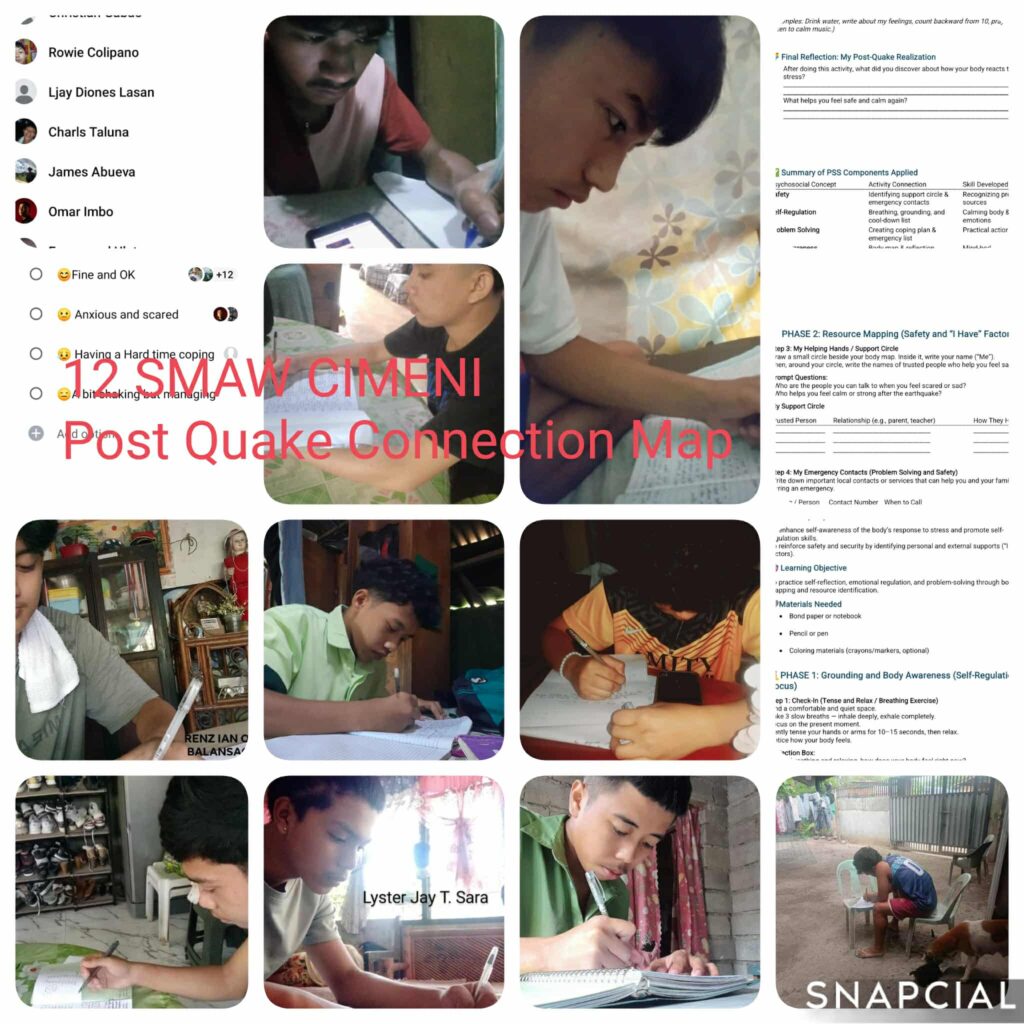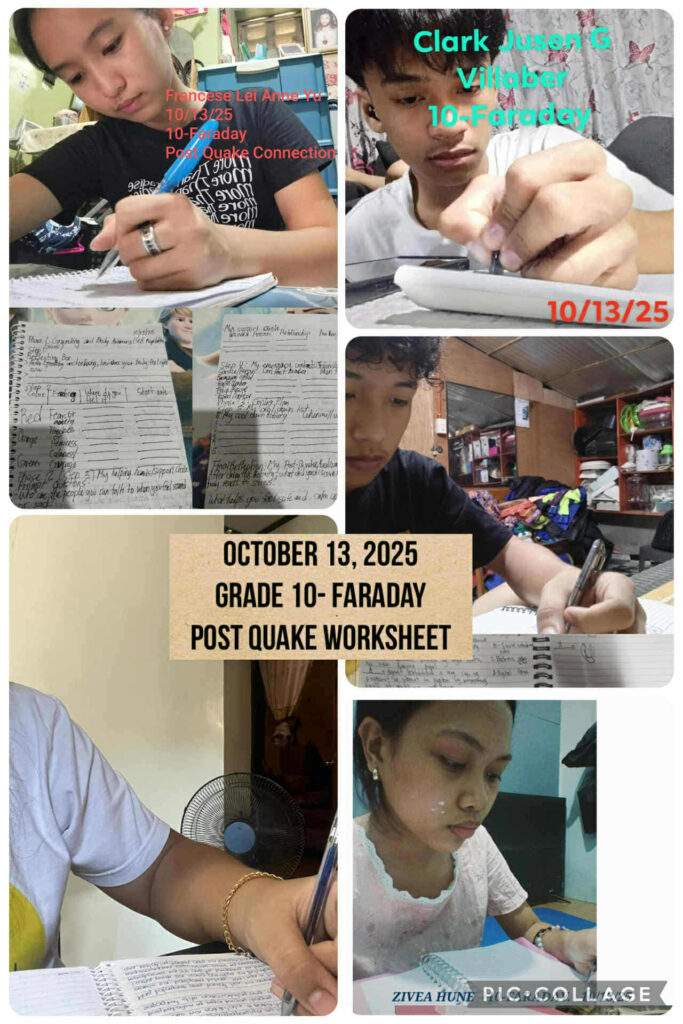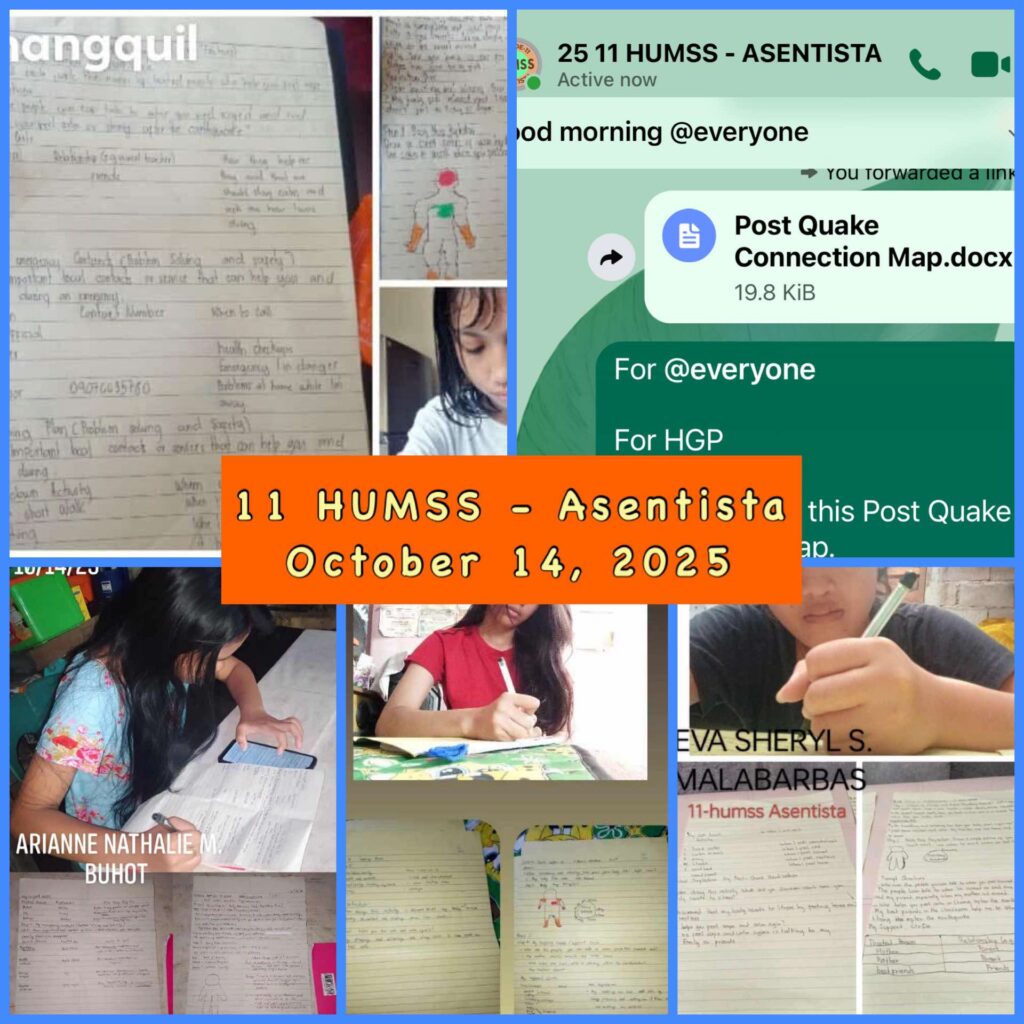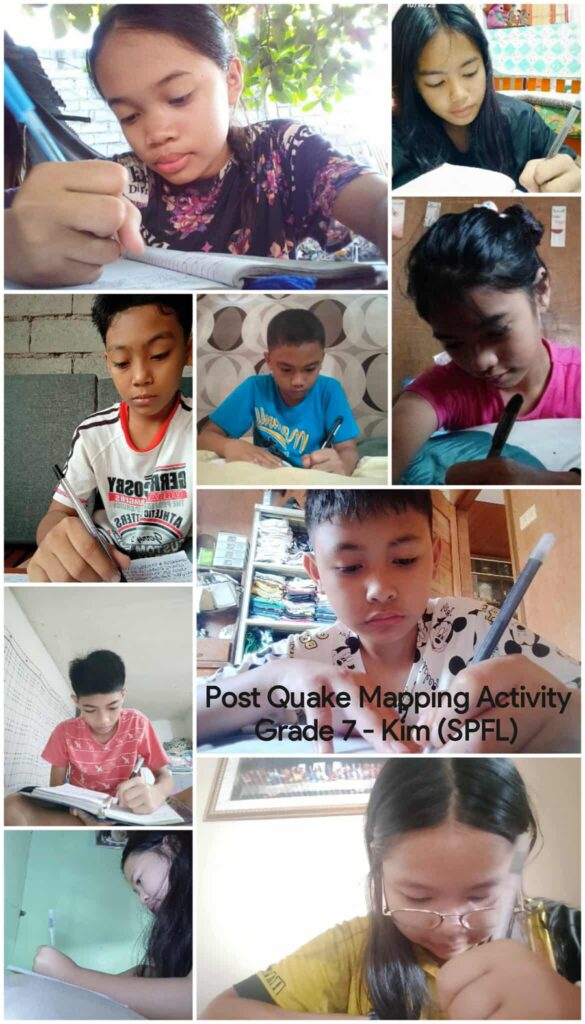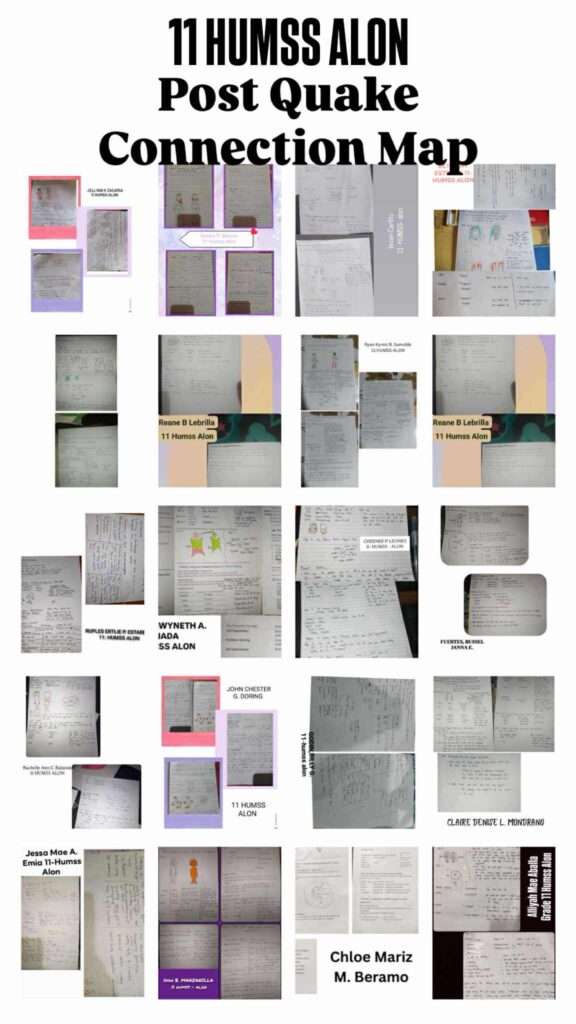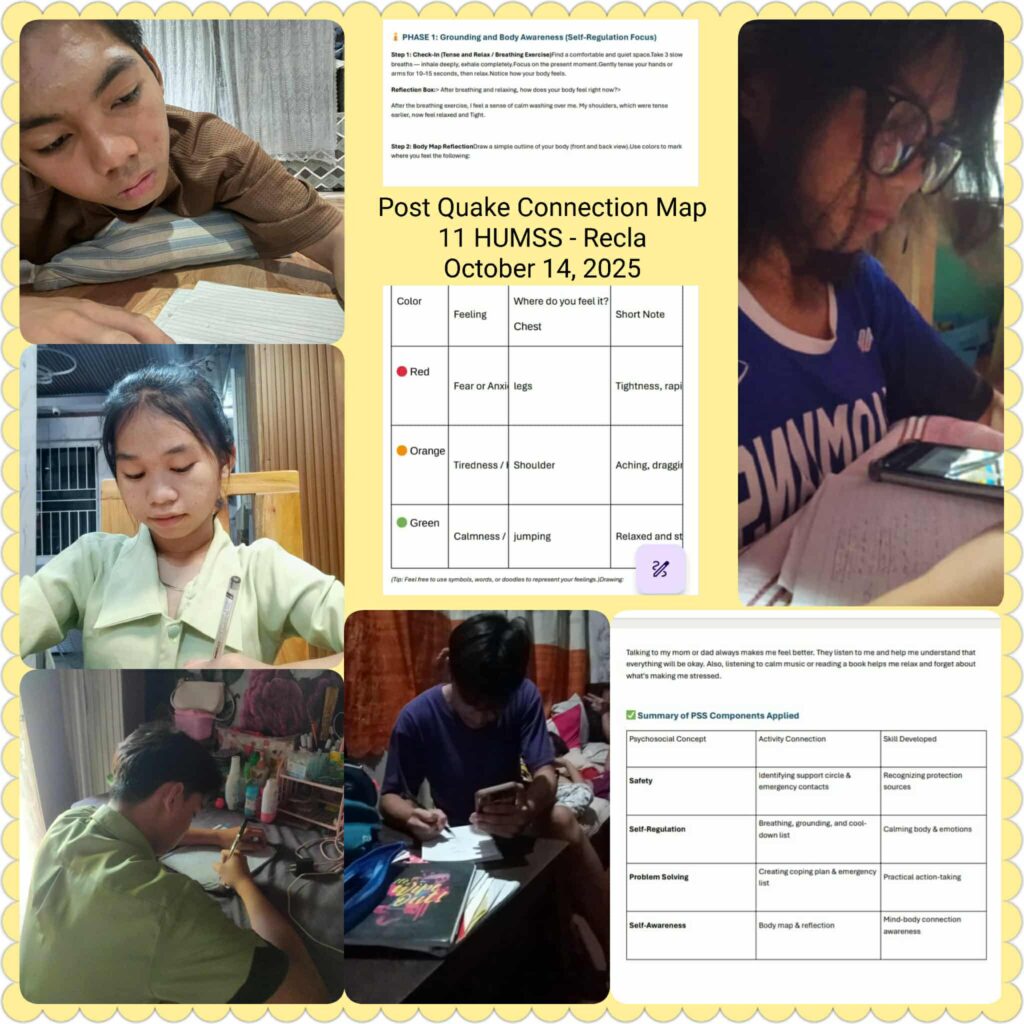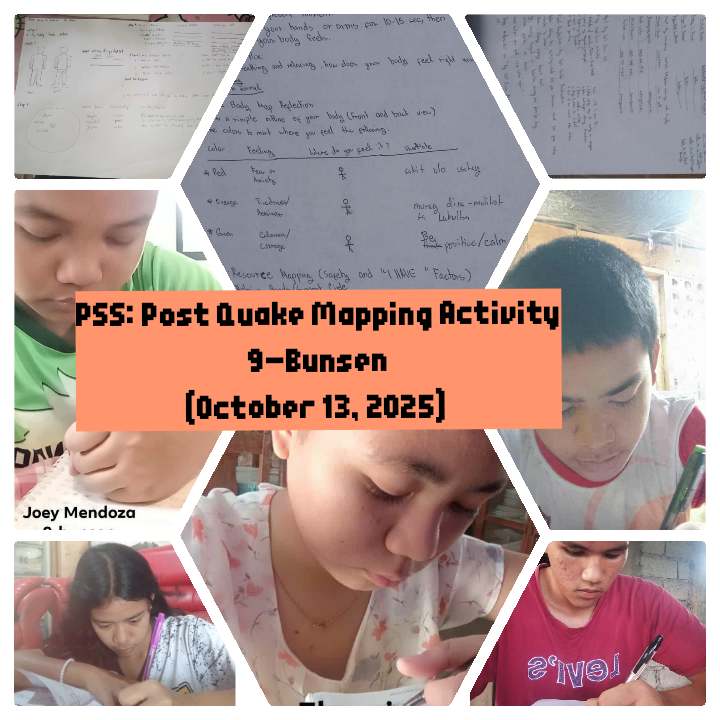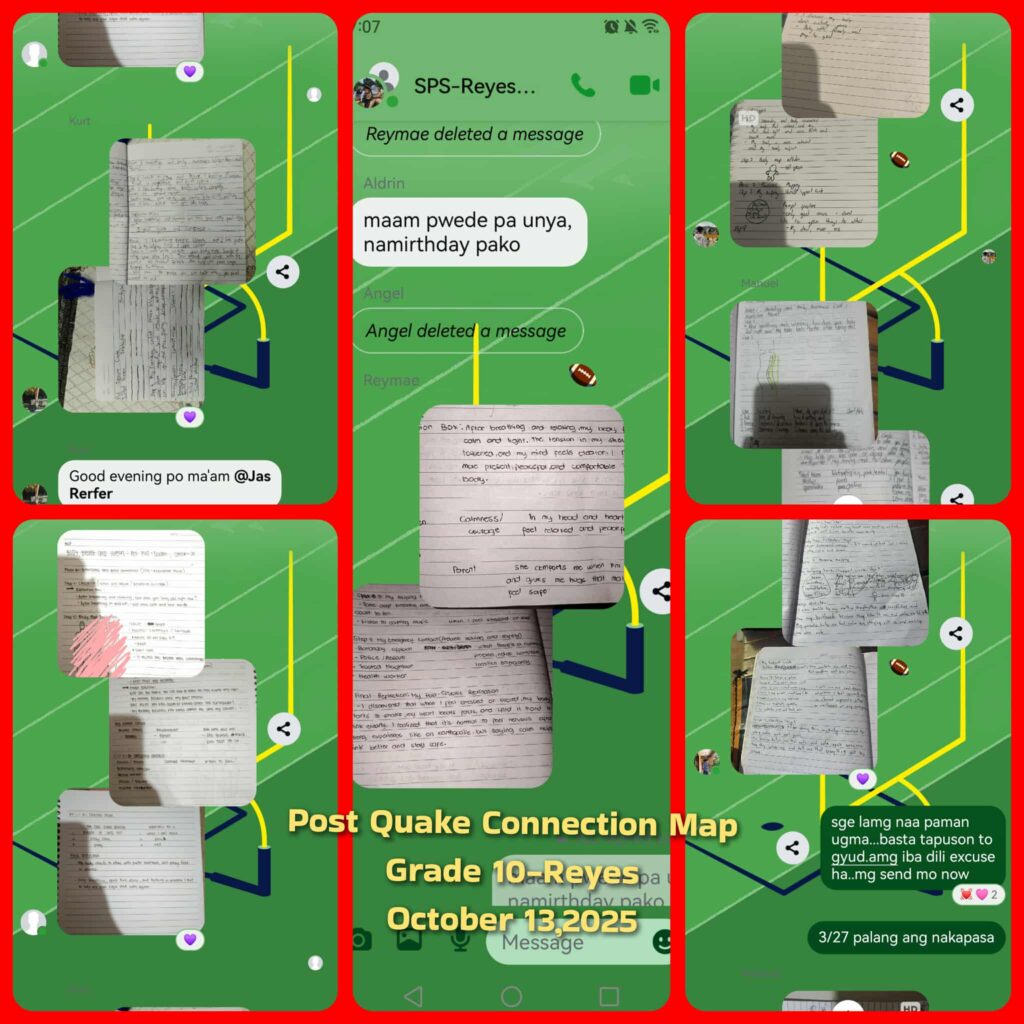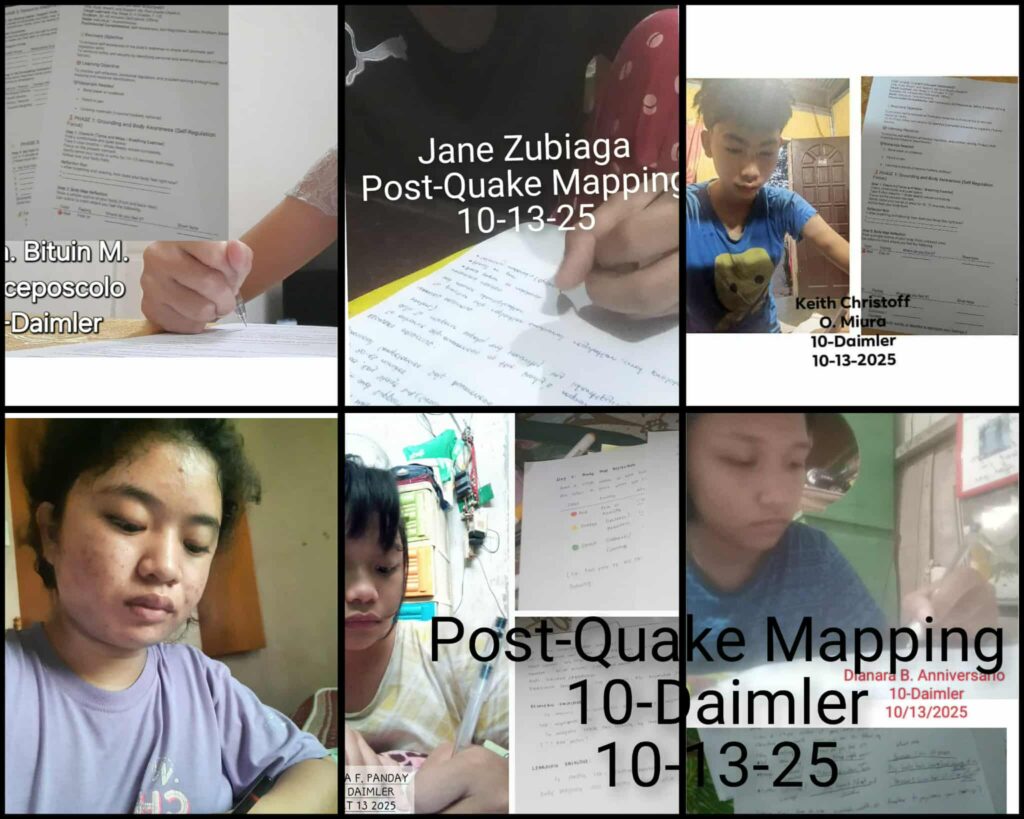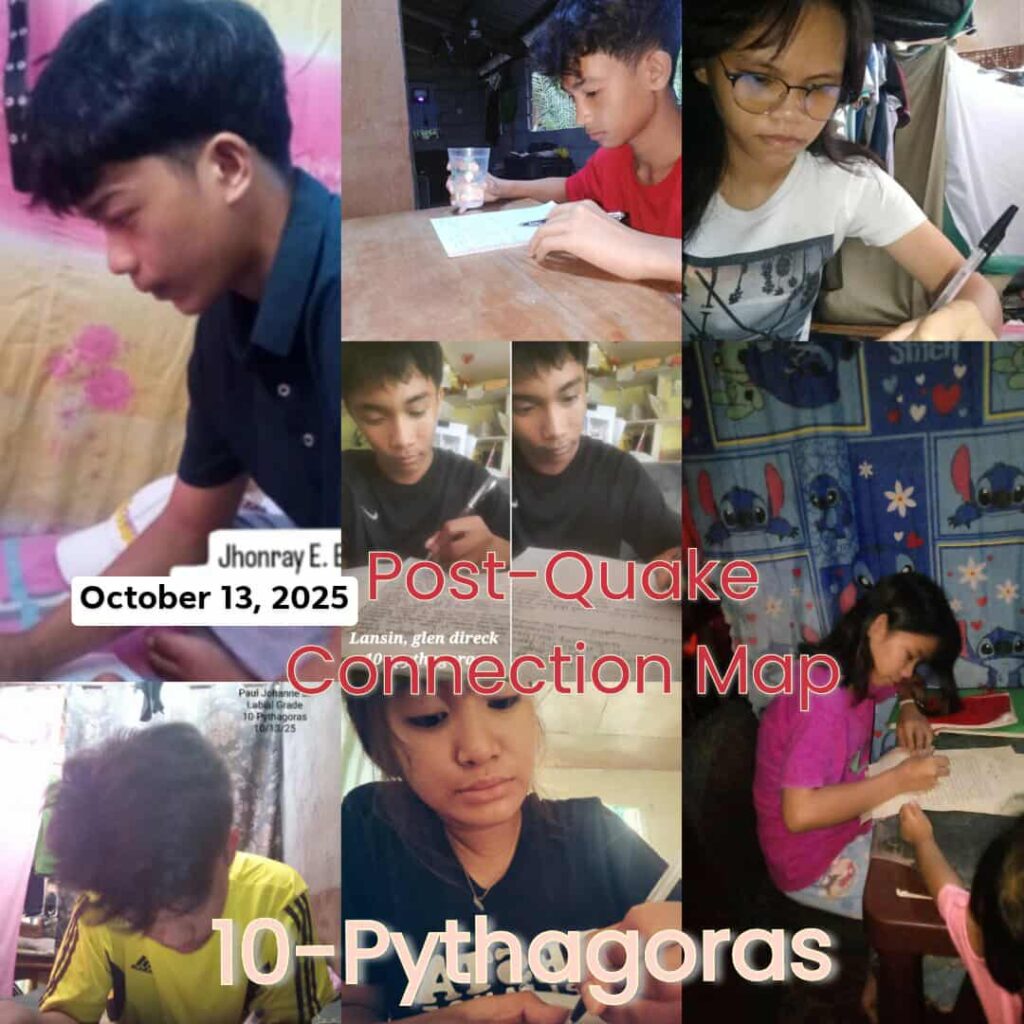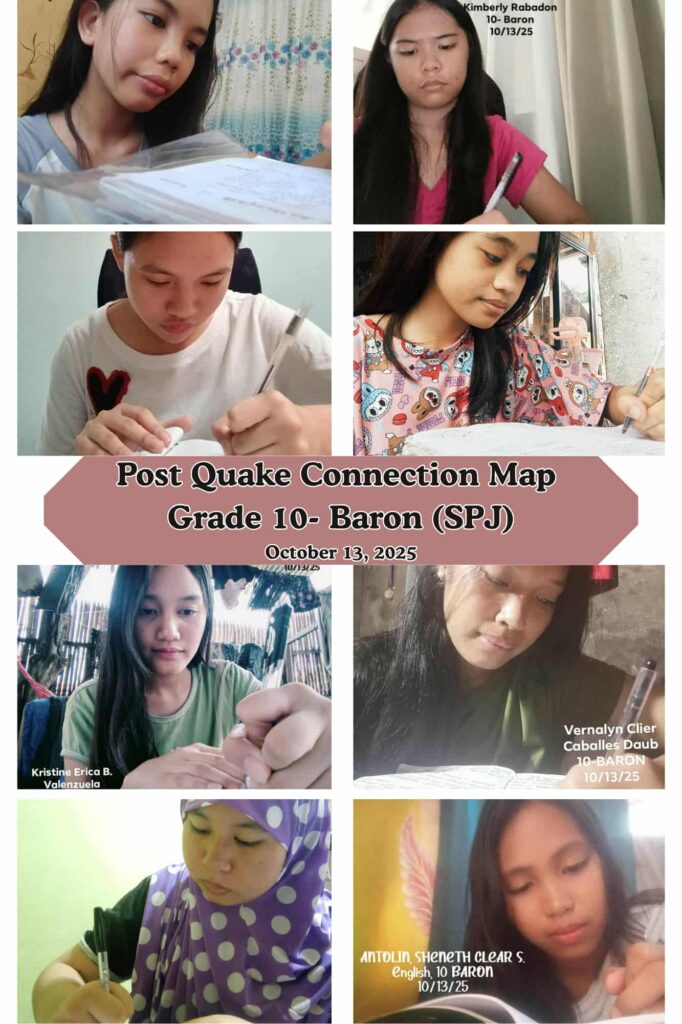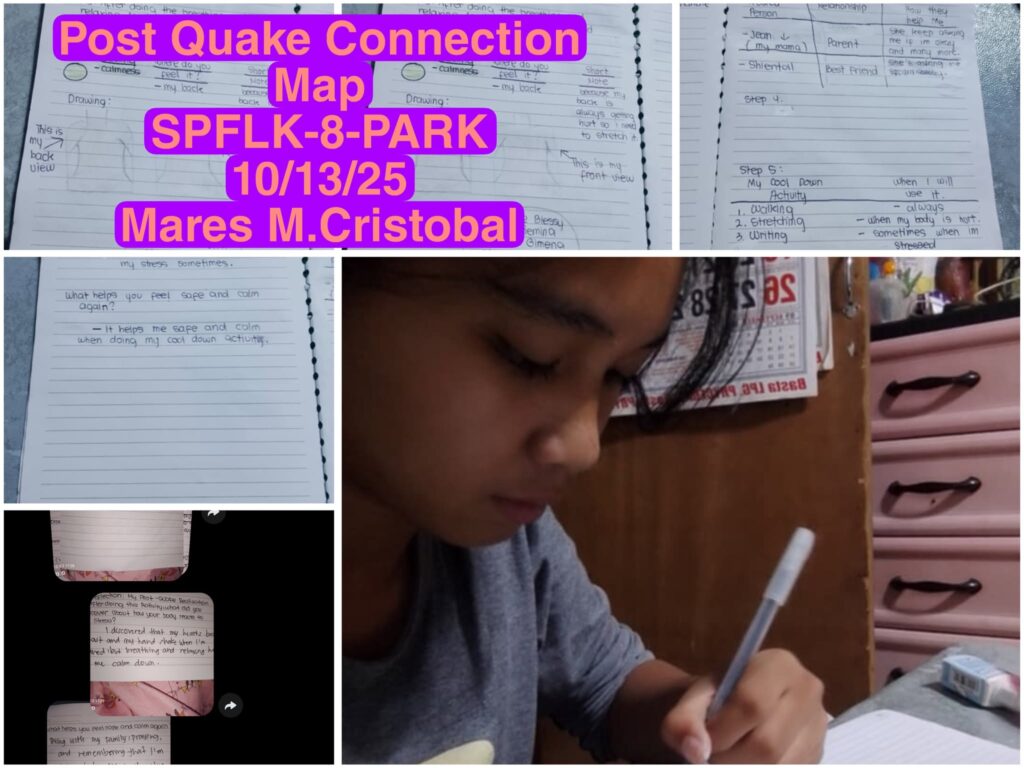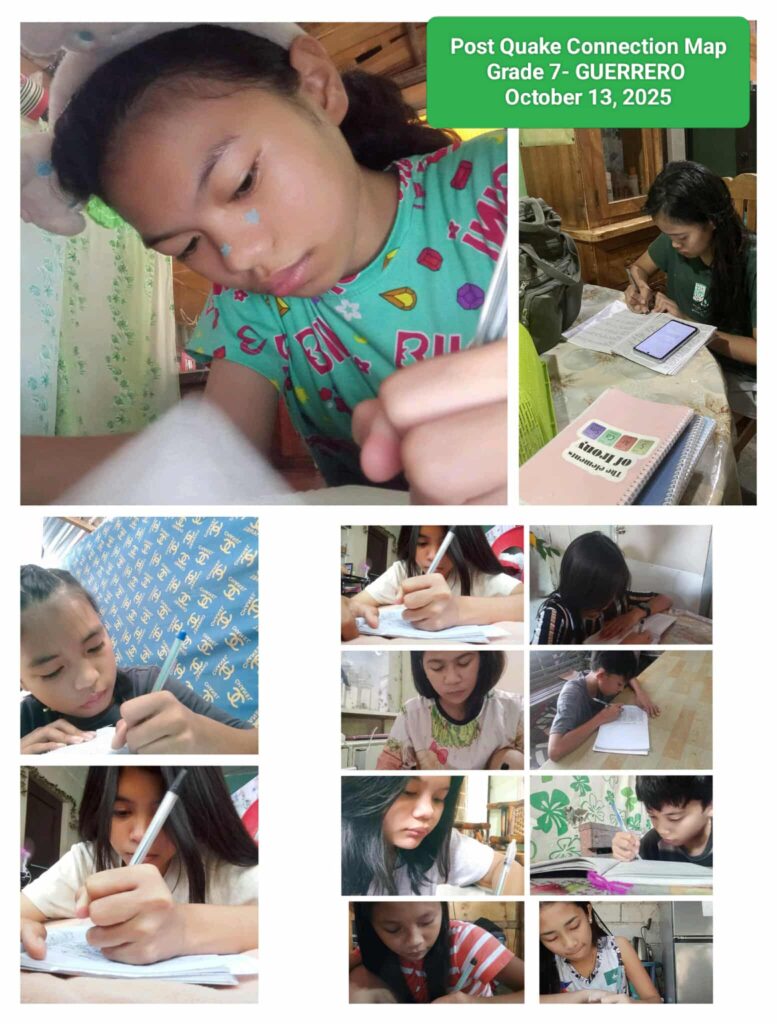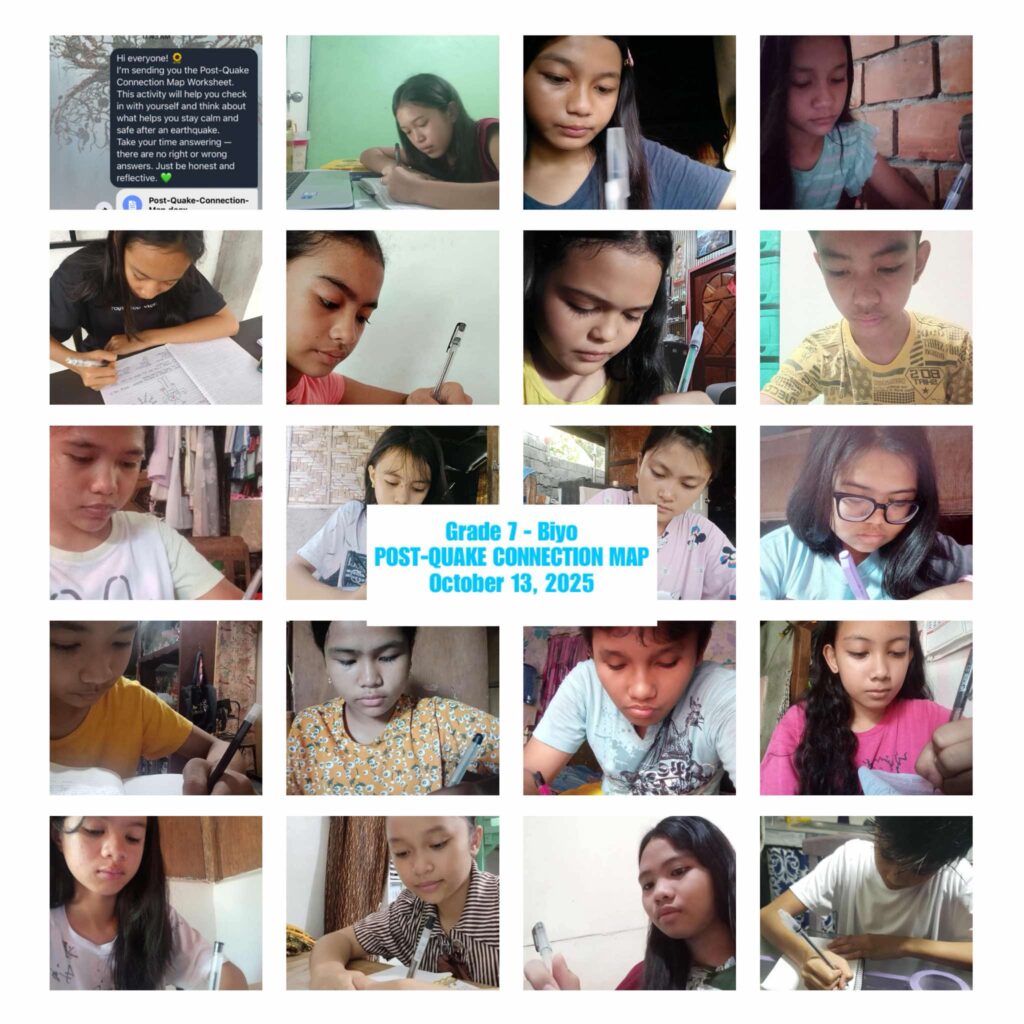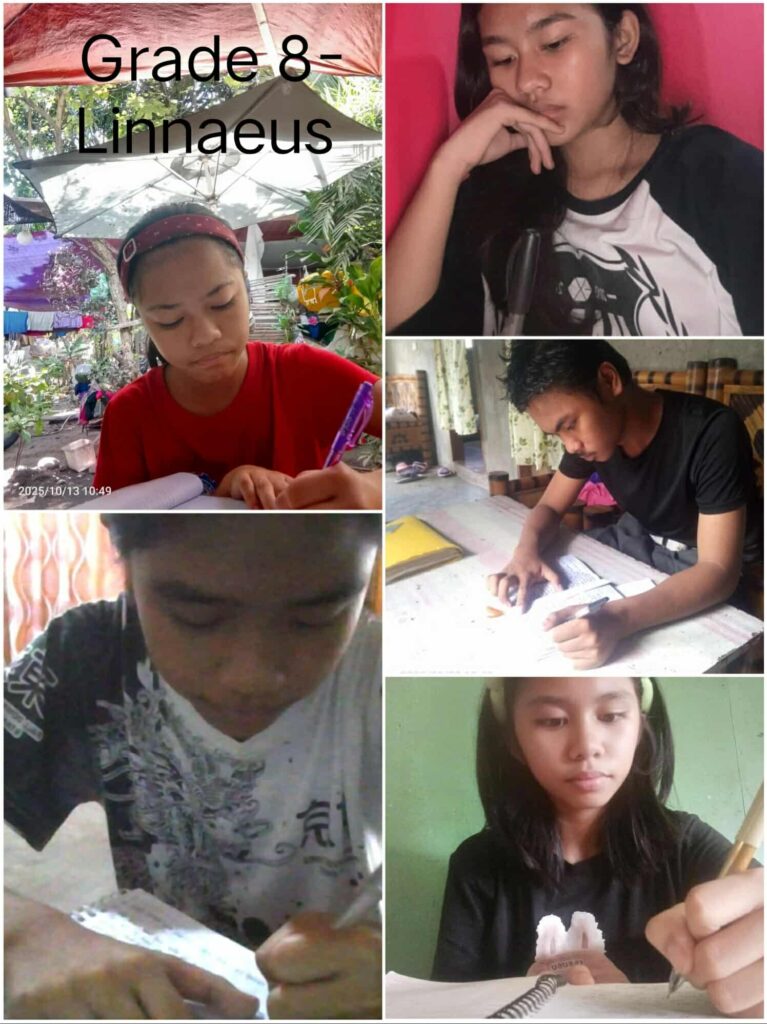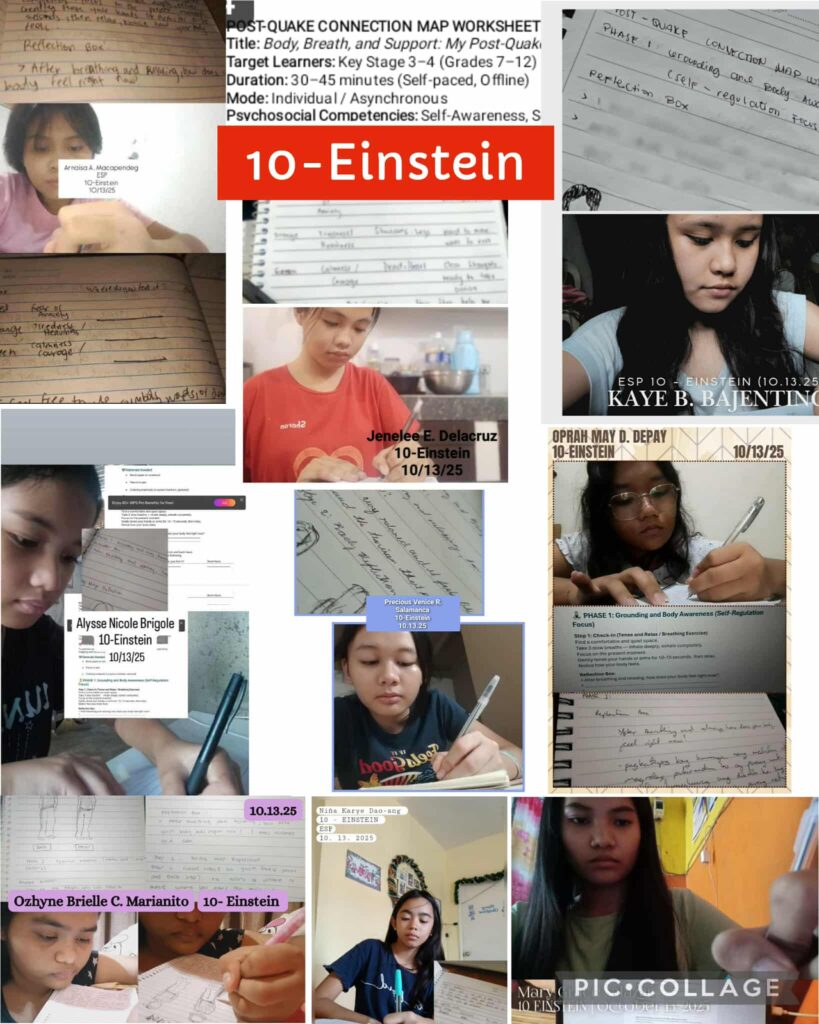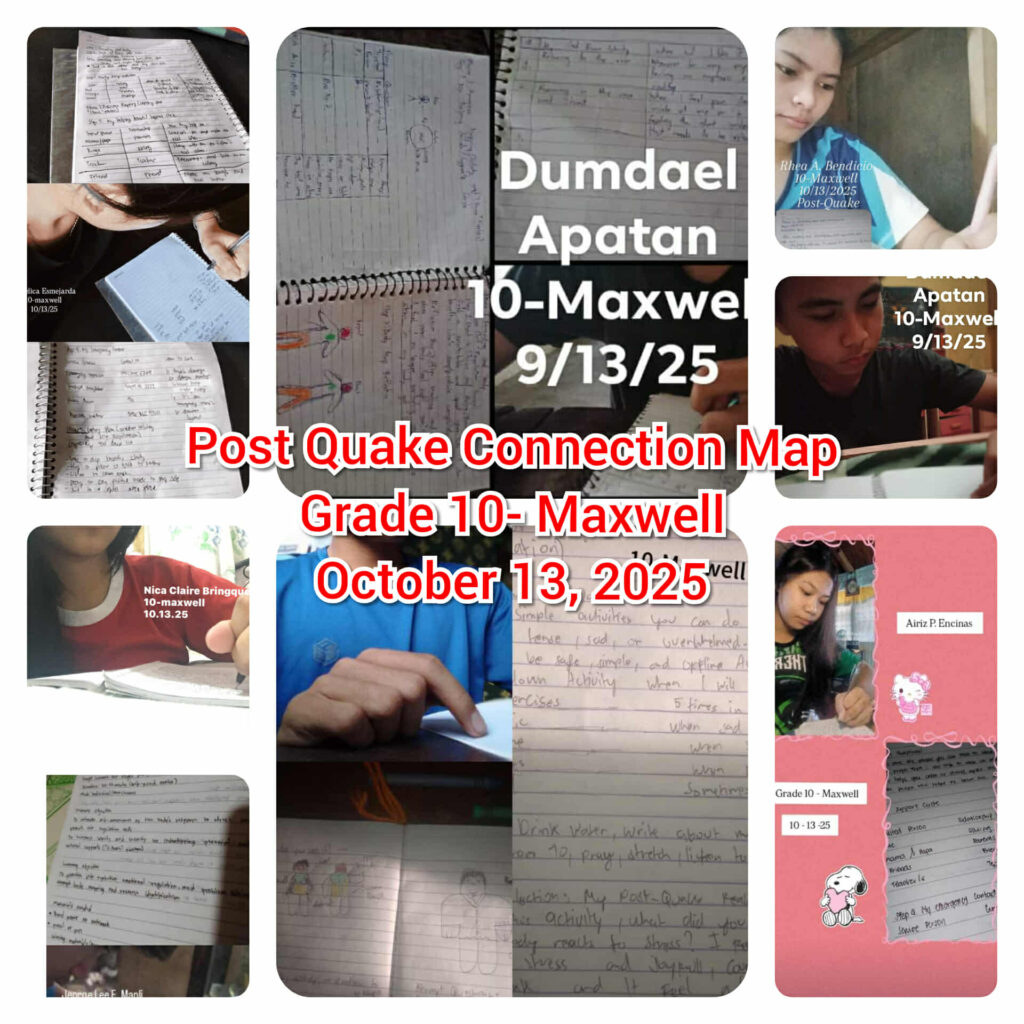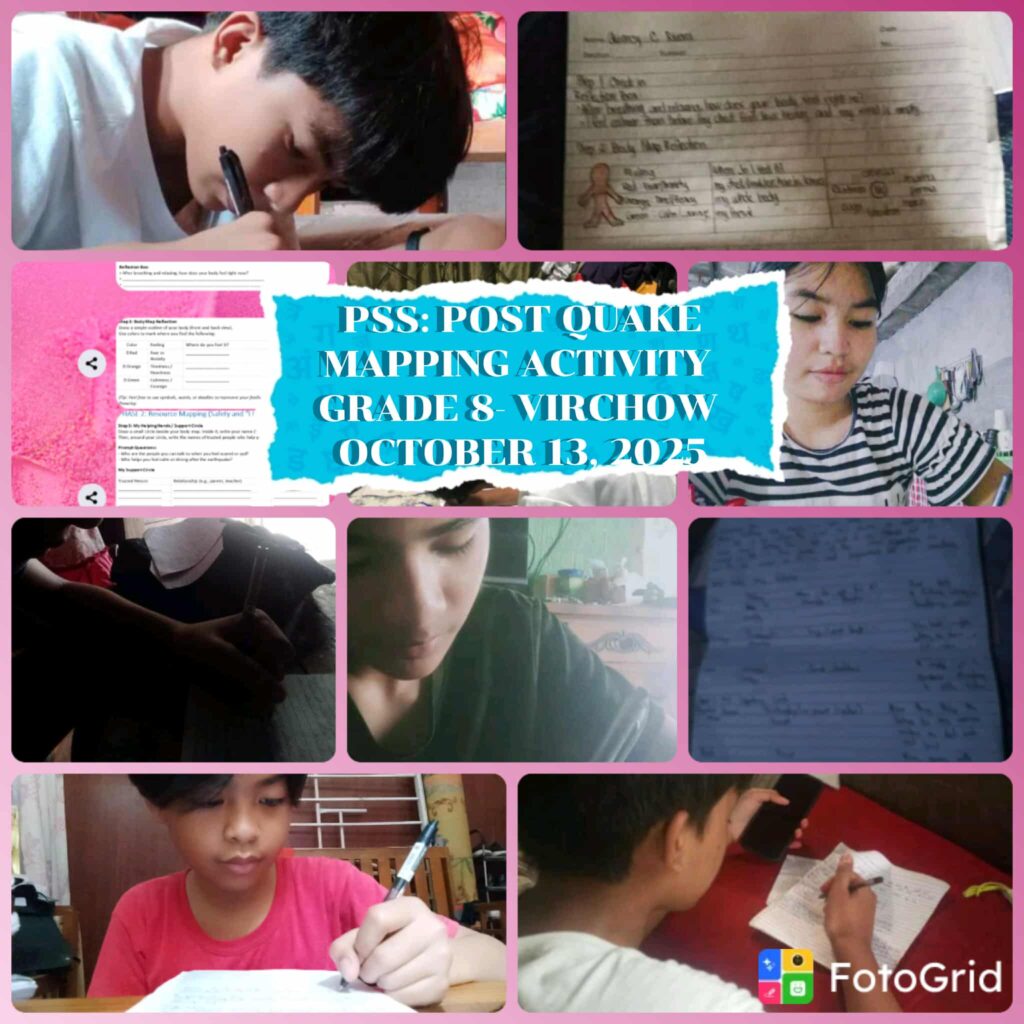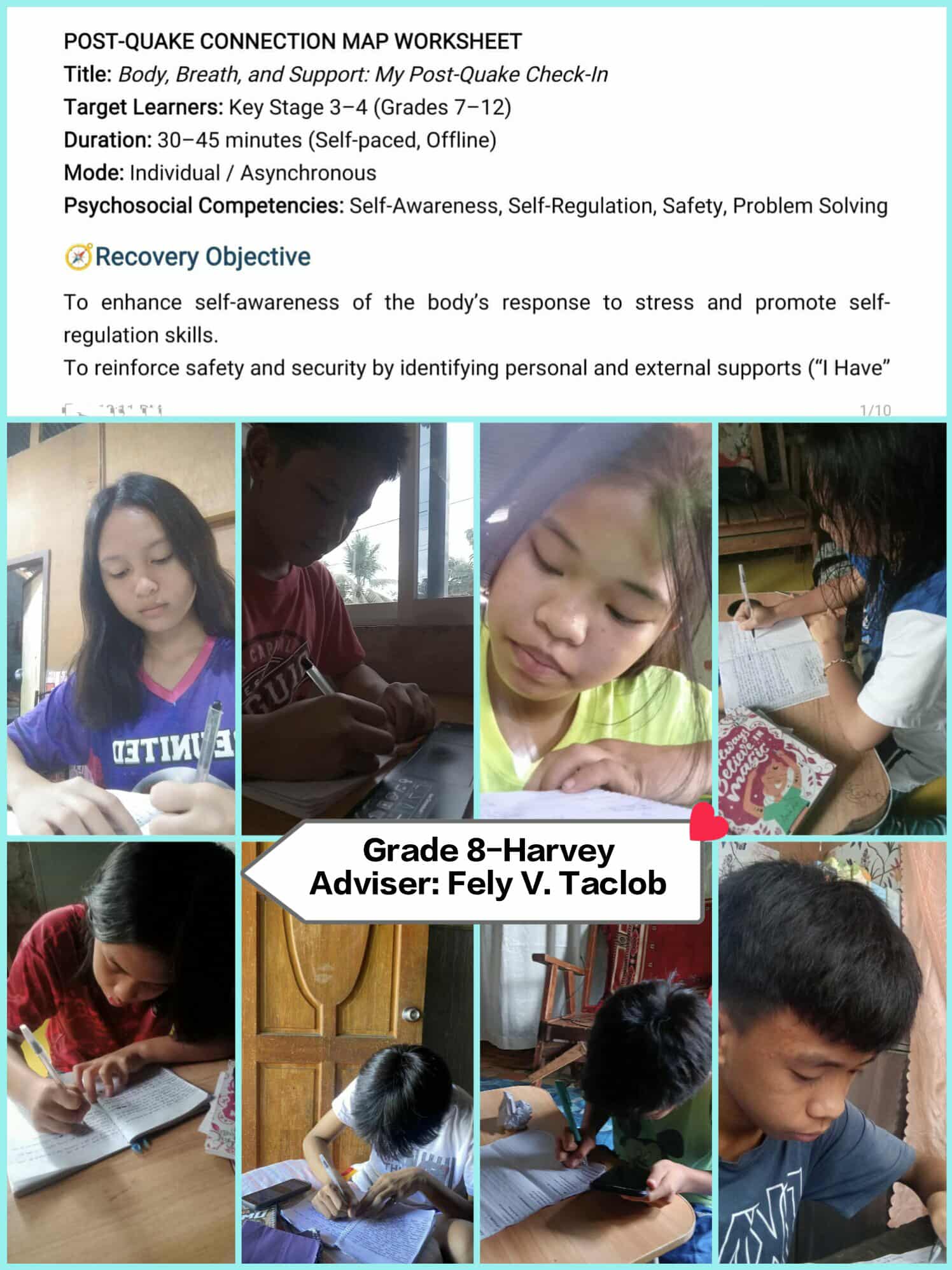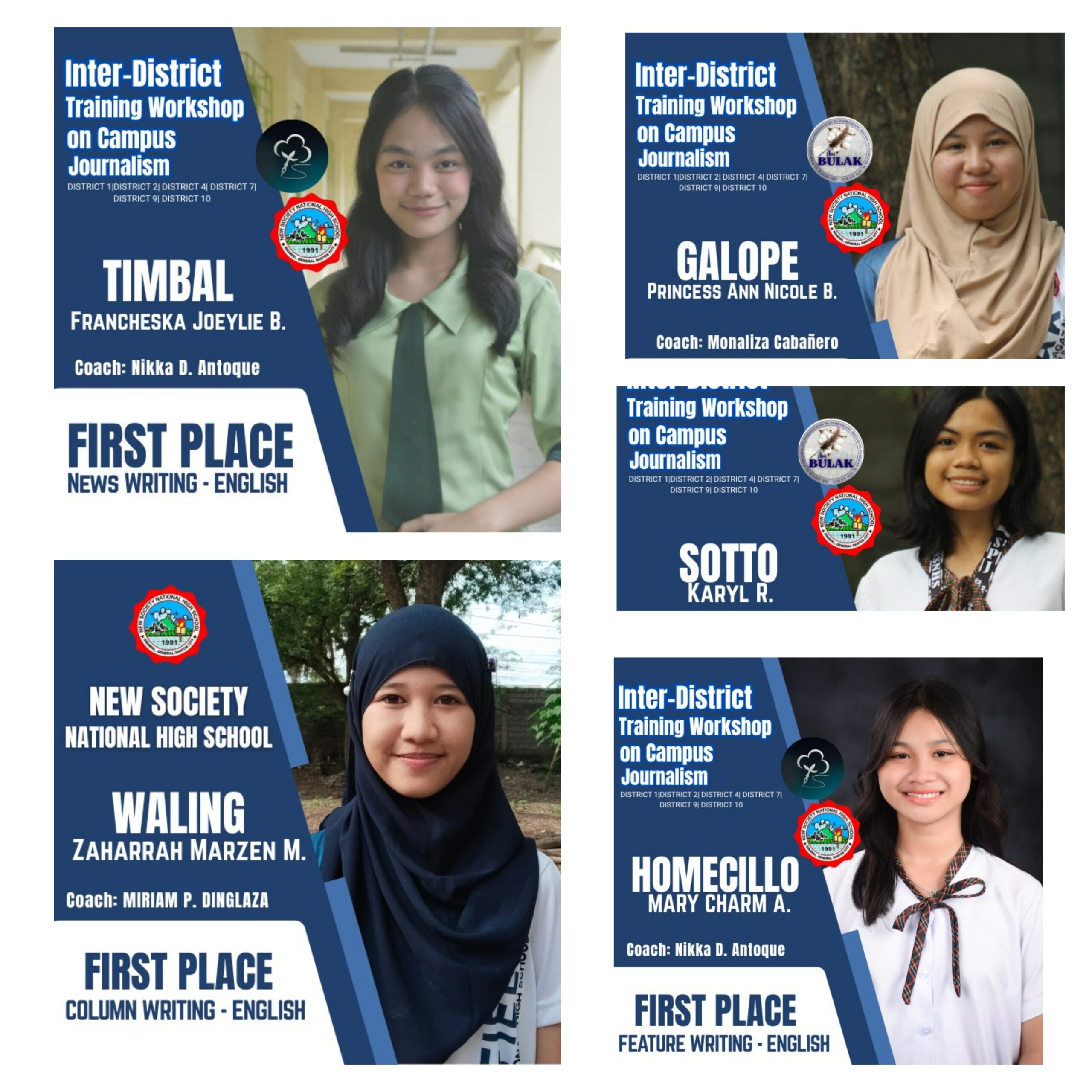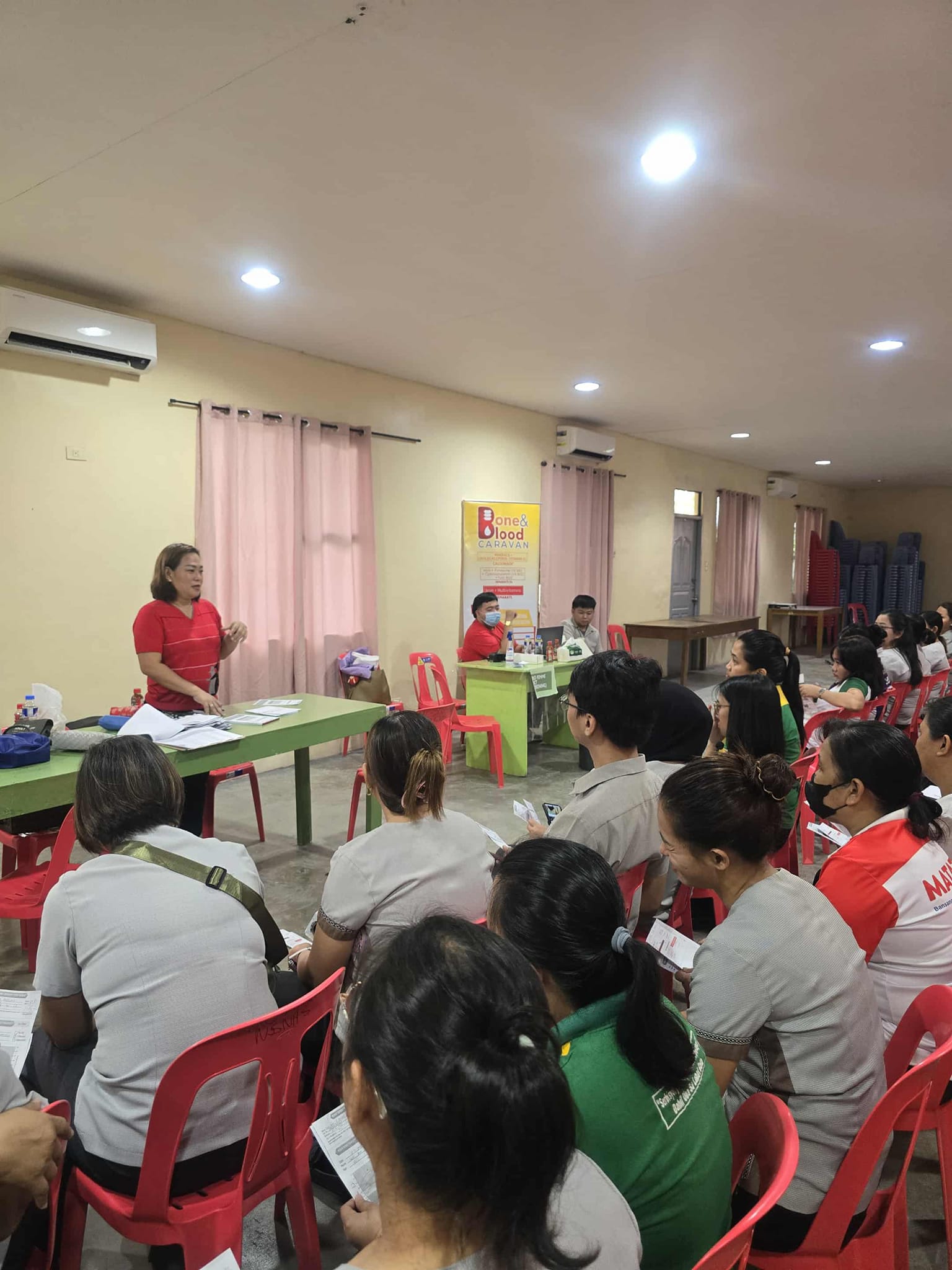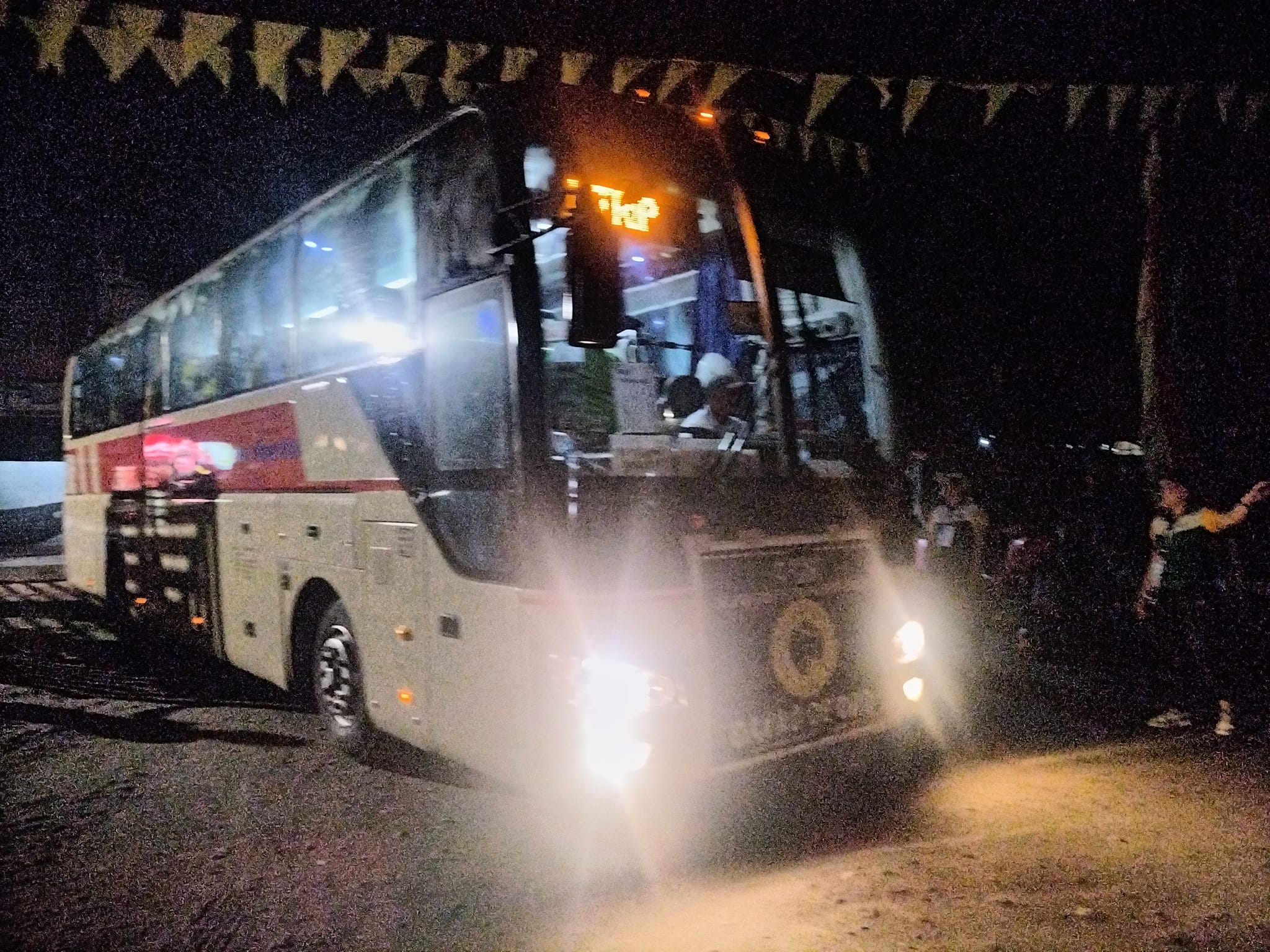Following the recent earthquake events, a targeted Mental Health and Psychosocial Support Services (MPHSS) initiative was deployed to assist affected learners. Crucially, the intervention was designed and executed as a self-paced, offline exercise (the “Post-Quake Connection Map”), allowing participants to engage remotely and individually. This decentralized strategy ensured immediate emotional care delivery without dependence on a physical group setting.
Target Group
Key Stage 3–4 Learners (Grades 7–12)
Activity Description
The “Post-Quake Check-In” is a 30- to 45-minute self-paced activity focused on three core areas:
- Body: Identifying and acknowledging physical sensations (tension, relaxation, etc.) post-event.
- Breath: Utilizing simple breathing techniques for self-regulation and emotional balance.
- Support: Mapping out and recognizing personal coping strategies and external sources of support (people and resources).
Key Objectives and Outcomes
| Objective | Outcome/Impact |
| Foster Self-Awareness & Self-Regulation | Activity encouraged learners to connect mind and body, promoting internal stability and emotional control after a traumatic event. |
| Promote Psychological Healing | Provided a structured framework to process trauma, helping to normalize feelings of fear and anxiety among the participants. |
| Develop Resilience and Problem-Solving | Guided learners to identify existing coping mechanisms and external support networks, enhancing their sense of security and preparedness. |
Conclusion and Next Steps
The implementation of the self-paced “Post-Quake Connection Map” successfully provided a broad base of immediate psychosocial support. The individual reports generated by the learners—detailing their emotional and physical state—will now be utilized for a critical follow-up phase. The collected data will be analyzed to triage and facilitate necessary individual counseling referrals for any student exhibiting signs of persistent, significant distress, ensuring continuous support for the holistic well-being of the entire student population.
